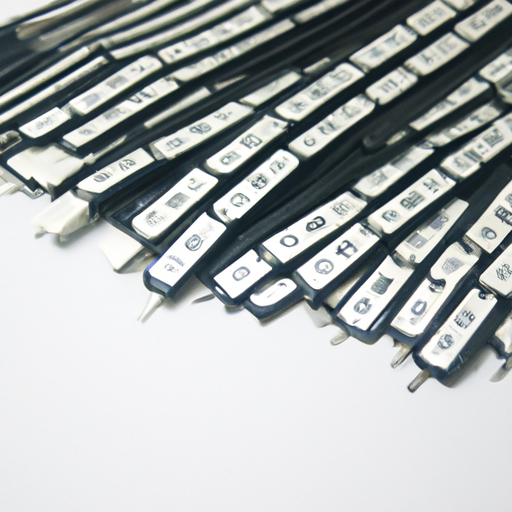What are the Product Features of Strip Resistors?
I. Introduction
In the world of electronics, resistors play a crucial role in controlling current flow and managing voltage levels. Among the various types of resistors, strip resistors stand out due to their unique design and versatile applications. Strip resistors are flat, elongated resistive components that are often used in high-power applications. This blog post aims to explore the product features of strip resistors, highlighting their characteristics, electrical properties, performance features, applications, and advantages.
II. Basic Characteristics of Strip Resistors
A. Construction and Design
Strip resistors are typically constructed from materials such as metal or carbon, which provide the necessary resistive properties. The choice of material affects the resistor's performance, including its stability and temperature coefficient. The physical dimensions of strip resistors can vary significantly, with lengths often ranging from a few millimeters to several centimeters. Their flat design allows for efficient heat dissipation, making them suitable for high-power applications.
B. Resistance Range
Strip resistors are available in a wide range of resistance values, typically from a few ohms to several megaohms. This versatility allows them to be used in various applications, from simple voltage dividers to complex power management systems. Tolerance levels, which indicate how much the actual resistance can deviate from the specified value, are also an important characteristic. Strip resistors generally offer tight tolerances, ensuring reliable performance in critical applications.
III. Electrical Properties
A. Power Rating
One of the most significant electrical properties of strip resistors is their power rating, which indicates the maximum amount of power the resistor can dissipate without overheating. Power dissipation is a critical factor in resistor design, as excessive heat can lead to failure. Strip resistors are designed to handle high power levels, making them ideal for applications such as power supplies and motor control circuits.
B. Temperature Coefficient
The temperature coefficient of a resistor measures how its resistance changes with temperature. For strip resistors, this characteristic is vital, as variations in temperature can significantly impact performance. A low temperature coefficient indicates that the resistor will maintain its resistance value over a wide temperature range, ensuring stable operation in varying environmental conditions.
IV. Performance Features
A. Stability and Reliability
Stability and reliability are paramount in electronic components, and strip resistors excel in these areas. They are designed to withstand long-term stress, including thermal cycling and mechanical vibrations. Environmental factors such as humidity and temperature fluctuations can affect performance, but high-quality strip resistors are engineered to maintain their specifications under such conditions.
B. Noise Characteristics
Noise is an inherent issue in electronic circuits, and resistors can contribute to this problem. Strip resistors are designed to minimize noise, particularly in sensitive applications such as audio equipment and precision measurement devices. Low-noise performance is essential for maintaining signal integrity and ensuring accurate readings in critical systems.
V. Thermal Management
A. Heat Dissipation
Effective heat dissipation is crucial for the performance and longevity of strip resistors. The flat design of these resistors allows for efficient heat transfer, reducing the risk of overheating. Various mechanisms, such as conduction, convection, and radiation, play a role in heat dissipation. Designers must consider these mechanisms when integrating strip resistors into circuits to ensure optimal thermal management.
B. Thermal Resistance
Thermal resistance is a measure of a resistor's ability to resist heat flow. It is an important parameter that affects overall circuit performance. A low thermal resistance indicates that the resistor can effectively dissipate heat, which is essential for maintaining stable operation in high-power applications. Understanding thermal resistance helps engineers design circuits that can handle the heat generated by strip resistors without compromising performance.
VI. Applications of Strip Resistors
A. Common Uses in Electronics
Strip resistors are widely used in various electronic applications. One of the most common uses is in power supplies, where they help regulate voltage and current levels. They are also employed in signal processing applications, where precise resistance values are crucial for maintaining signal integrity.
B. Specialized Applications
Beyond general electronics, strip resistors find specialized applications in industries such as automotive and industrial equipment. In automotive systems, they are used in braking systems, power management, and sensor applications. In industrial settings, strip resistors are often found in motor control systems, where their ability to handle high power and provide stable performance is essential.
VII. Advantages of Strip Resistors
A. Compact Size
One of the standout features of strip resistors is their compact size. Their flat design allows for space-saving integration into various circuit layouts, making them ideal for applications where space is at a premium. This compactness does not compromise their performance, as they can handle significant power levels despite their small footprint.
B. Versatility
Strip resistors are highly versatile components that can be adapted to a wide range of applications. They can be customized to meet specific resistance values, power ratings, and physical dimensions, allowing engineers to tailor them to their unique requirements. This adaptability makes strip resistors a popular choice in both standard and specialized electronic designs.
VIII. Conclusion
In summary, strip resistors are essential components in the electronics industry, offering a range of features that make them suitable for various applications. Their construction, electrical properties, performance features, and advantages highlight their importance in modern electronic designs. Selecting the right strip resistor for a specific application is crucial for ensuring optimal performance and reliability. As technology continues to evolve, we can expect to see advancements in strip resistor technology, further enhancing their capabilities and applications in the future.
IX. References
For further reading and resources on strip resistors, consider exploring the following:
1. "Resistor Technology: A Comprehensive Guide" - A detailed overview of resistor types and applications.
2. "Understanding Power Resistors" - A technical paper discussing power ratings and thermal management.
3. Manufacturer datasheets for specific strip resistor models - These provide detailed specifications and performance characteristics.
By understanding the product features of strip resistors, engineers and designers can make informed decisions that enhance the performance and reliability of their electronic systems.






